Powershell Get Reg Value
PowerShell is a versatile and powerful scripting language that allows users to automate various tasks in the Windows operating system. One of its key features is the ability to interact with the Windows Registry, a central database that stores configuration settings and other important information for the operating system and installed applications. In this article, we will explore how to use PowerShell to get registry values, along with other related topics such as filtering, modifying, and managing registry values.
Identifying the Registry Key
Before retrieving registry values, it is essential to identify the specific registry key that contains the desired value. In the Windows Registry, keys are like folders that organize values and subkeys. The Get-Item cmdlet in PowerShell allows users to retrieve detailed information about a specific registry key. By specifying the registry path as the argument, users can obtain information such as the key’s name, type, and last write time.
Retrieving the Registry Value
Once the registry key has been identified, the next step is to retrieve the value contained within it. The registry value holds the actual data or configuration setting that users are interested in. Using the Get-ItemProperty cmdlet in PowerShell, users can retrieve the registry value associated with a specific registry key. This cmdlet retrieves the properties or values of a specific item, such as the value name, data, and data type.
Filtering Registry Values
In many cases, it is necessary to filter registry values based on specific criteria. PowerShell provides a range of options to narrow down the search for registry values. The Get-ItemProperty cmdlet can be augmented with filters such as property names, data types, and comparison operators to refine the search results. These filters help users retrieve only the registry values that meet their specific requirements.
Handling Multiple Registry Values
There may be situations where multiple registry values need to be retrieved simultaneously. PowerShell provides the Get-ChildItem cmdlet, which lists the child items (subkeys, values, and their properties) of a specified registry key. By piping the Get-ChildItem results to the Get-ItemProperty cmdlet, users can handle multiple registry values efficiently.
Managing Remote Registry Values
PowerShell also offers capabilities for managing remote registry values on other computers within a network. This can be helpful when troubleshooting or configuring multiple computers simultaneously. By using the Invoke-Command cmdlet, users can execute PowerShell commands on remote machines to retrieve their registry values. This provides a centralized approach to manage registry values across multiple computers.
Modifying Registry Values
There are scenarios when it becomes necessary to modify existing registry values. PowerShell provides the Set-ItemProperty cmdlet to accomplish this task. The Set-ItemProperty cmdlet allows users to update the data or configuration settings of a specific registry value without affecting other properties or values within the registry key.
Creating New Registry Values
In addition to modifying existing registry values, PowerShell also enables users to create new registry values. The New-ItemProperty cmdlet allows users to create a new registry value within a specified registry key. This cmdlet not only creates the value but also sets the data and data type for the new registry value.
Deleting Registry Values
Over time, unwanted registry values may accumulate, cluttering the system and potentially causing issues. PowerShell provides a solution for removing these unwanted registry values using the Remove-ItemProperty cmdlet. By specifying the registry key and value name as arguments, users can effectively delete registry values that are no longer required.
Managing Registry Permissions
Managing registry permissions is essential for maintaining the security and integrity of the Windows Registry. PowerShell offers the Set-Acl cmdlet, which allows users to modify registry permissions. By using this cmdlet, users can grant or revoke specific permissions for registry keys or values, ensuring that only authorized users have access to certain areas of the registry.
FAQs
Q: How can I query the registry in PowerShell?
A: PowerShell provides the Get-ItemProperty cmdlet to query registry values. By specifying the registry path and property names, users can retrieve specific registry values.
Q: Can I search the registry using PowerShell?
A: Yes, the Get-ChildItem cmdlet allows users to search the registry for specific keys, values, and properties. By using filters and wildcards, users can narrow down the search results.
Q: How can I change a registry key using PowerShell?
A: PowerShell provides the Set-ItemProperty cmdlet to modify registry values. By specifying the registry path, value name, and new data, users can change the existing value of a registry key.
In conclusion, PowerShell offers a wide range of capabilities to interact with and manipulate registry values. From retrieving specific registry values to modifying and managing them, PowerShell provides a comprehensive set of cmdlets that can streamline administrative tasks and enhance system management. By utilizing these PowerShell cmdlets, users can automate various registry-related operations and efficiently manage registry values in the Windows operating system.
Using Powershell – Modify A Registry Key Value
How To Get Registry Value In Powershell?
The Windows Registry is a centralized database that stores important configuration settings and options for the Microsoft Windows operating system. It contains information about hardware profiles, installed software, user preferences, and system settings. Accessing and manipulating registry values can be crucial for maintaining and configuring a Windows system. PowerShell, a powerful command-line shell and scripting language developed by Microsoft, provides a convenient way to interact with the registry. In this article, we will explore various methods to retrieve registry values using PowerShell.
Method 1: Using the Get-ItemProperty Cmdlet
One of the simplest ways to retrieve a registry value in PowerShell is by using the Get-ItemProperty cmdlet. This cmdlet allows you to get the properties of a registry key, including its values. Here’s an example of how to use it:
“`powershell
$value = Get-ItemProperty -Path ‘HKLM:\SOFTWARE\Microsoft\Windows\CurrentVersion’ -Name ‘ProgramFilesDir’
$value.ProgramFilesDir
“`
In this example, we are retrieving the value of the “ProgramFilesDir” registry value under the “HKLM:\SOFTWARE\Microsoft\Windows\CurrentVersion” key. The value is then stored in the “$value” variable and displayed on the console.
Method 2: Using the Get-Item and GetValue Method
Another way to retrieve a registry value is by using the Get-Item and GetValue methods. This method is particularly useful when you want to avoid loading the entire registry key. Here’s an example:
“`powershell
$regKey = Get-Item -Path ‘HKLM:\SOFTWARE\Microsoft\Windows\CurrentVersion’
$value = $regKey.GetValue(‘ProgramFilesDir’)
$value
“`
In this example, we are using the Get-Item cmdlet to retrieve a reference to the registry key, and then the GetValue method to retrieve the value of the specified registry value. The value is stored in the “$value” variable and displayed on the console.
Method 3: Using the Get-ChildItem and Get-ItemPropertyValue Cmdlets
If you want to retrieve multiple registry values, you can use the Get-ChildItem cmdlet in combination with the Get-ItemPropertyValue cmdlet. Here’s an example:
“`powershell
$regKey = Get-ChildItem -Path ‘HKLM:\SOFTWARE\Microsoft\Windows\CurrentVersion’
$values = $regKey | Get-ItemPropertyValue
$values
“`
In this example, we are using the Get-ChildItem cmdlet to retrieve all the child items (registry values) under the specified registry key. Then, we use the Get-ItemPropertyValue cmdlet to retrieve the values of all the registry values. The values are stored in the “$values” variable and displayed on the console.
FAQs:
Q1: Can I retrieve registry values from a remote computer?
Yes, PowerShell allows you to retrieve registry values from a remote computer by using the “-ComputerName” parameter with the Get-ItemProperty or Get-Item cmdlets. For example:
“`powershell
$value = Get-ItemProperty -Path ‘HKLM:\SOFTWARE\Microsoft\Windows\CurrentVersion’ -Name ‘ProgramFilesDir’ -ComputerName ‘RemoteComputer’
“`
Q2: How can I retrieve a registry value from a specific registry hive?
To retrieve a registry value from a specific registry hive, you need to specify the hive name in the registry path. For example, to retrieve a value from the HKEY_CURRENT_USER hive:
“`powershell
$value = Get-ItemProperty -Path ‘HKCU:\Software\Microsoft\Windows\CurrentVersion’ -Name ‘ProgramFilesDir’
“`
Q3: Can I retrieve registry values using wildcard characters?
Yes, you can use wildcard characters like “*” and “?” in the registry path or name to retrieve registry values that match a specific pattern. For example, to retrieve all values under a specific registry key that start with “Program”, you can use the following command:
“`powershell
$values = Get-ItemProperty -Path ‘HKLM:\SOFTWARE\Microsoft\Windows\CurrentVersion’ -Name ‘Program*’
“`
Q4: How can I retrieve registry values from a 64-bit registry on a 64-bit system?
On a 64-bit version of Windows, there are separate registry views for 32-bit and 64-bit applications. To access the 64-bit registry view, you need to use the “Wow6432Node” path. For example:
“`powershell
$value = Get-ItemProperty -Path ‘HKLM:\SOFTWARE\Wow6432Node\Microsoft\Windows\CurrentVersion’ -Name ‘ProgramFilesDir’
“`
Conclusion
Retrieving registry values using PowerShell can be essential for managing and configuring Windows systems. In this article, we explored different methods to retrieve registry values, including the Get-ItemProperty cmdlet, Get-Item and GetValue method, and the combination of Get-ChildItem and Get-ItemPropertyValue cmdlets. We also covered frequently asked questions related to retrieving registry values in PowerShell. Hopefully, this article helps you understand the process of getting registry values in PowerShell and empowers you to efficiently work with registry settings.
How To Get Registry Value From Command Line?
The Windows Registry is a vital component of the Windows operating system. It stores essential configuration settings for various software applications, hardware devices, user preferences, and system settings. Being able to access and modify registry values is crucial for system administrators and power users. While the Windows Registry Editor (regedit) provides a GUI interface to navigate and edit registry settings, it is often more efficient to use the command line to perform certain tasks. In this article, we will explore different methods to get registry values from the command line.
1. Using the Reg Query Command:
The reg query command is a powerful tool built into Windows that enables users to query and retrieve registry information. To get a specific registry value, follow these steps:
– Open the command prompt by pressing Win + R and typing “cmd” in the Run dialog box.
– Type “reg query” followed by the registry path and the value you want to retrieve. For example, to get the value of the “Version” key in “HKEY_LOCAL_MACHINE\SOFTWARE\Microsoft\Windows”, use the command:
“`reg query HKEY_LOCAL_MACHINE\SOFTWARE\Microsoft\Windows /v Version“`
– Press Enter, and the command prompt will display the corresponding registry value.
2. Taking Advantage of the Reg.exe Utility:
Reg.exe is a command line utility provided by Windows that offers more flexibility in managing registry values. To retrieve a registry value using Reg.exe utility, follow these steps:
– Open the command prompt.
– Type “reg” and press Tab twice, and you will see the available options for the reg.exe utility.
– Use the command syntax “reg query [options] [keyname] [/v valuename]” to retrieve a specific registry value. For instance, to get the value of “DisplayName” under “HKEY_LOCAL_MACHINE\SOFTWARE\Microsoft\Windows\CurrentVersion\Uninstall”, enter the command:
“`reg query HKEY_LOCAL_MACHINE\SOFTWARE\Microsoft\Windows\CurrentVersion\Uninstall /v DisplayName“`
– Press Enter, and the command prompt will display the desired registry value.
3. Employing PowerShell Commands:
PowerShell, a command-line shell developed by Microsoft, provides more advanced functionalities to interact with the registry. You can use the following steps to retrieve registry values using PowerShell:
– Open PowerShell by typing “powershell” in the Run dialog or by searching for it in the Start menu.
– Use the command “Get-ItemProperty -Path [RegistryPath] -Name [ValueName]” to retrieve a specific registry value. For example, to get the value of “RegisteredOwner” under “HKLM:\SOFTWARE\Microsoft\Windows NT\CurrentVersion”, enter the command:
“`Get-ItemProperty -Path HKLM:\SOFTWARE\Microsoft\Windows NT\CurrentVersion -Name RegisteredOwner“`
– Press Enter, and PowerShell will display the desired registry value.
FAQs:
Q: Can I use the reg query command to retrieve registry values remotely?
A: Yes, you can use the reg query command with the “/s” parameter followed by the target machine’s name to retrieve registry values remotely. For example, use the command “reg query \\ComputerName\HKEY_LOCAL_MACHINE\SOFTWARE\Microsoft\Windows /v Version” to get the value of “Version” from a remote machine.
Q: Is it possible to save the output of the registry value into a text file?
A: Yes, you can redirect the output of the reg query or PowerShell commands to a text file by using the “>” symbol followed by the path and filename. For example, “reg query HKEY_LOCAL_MACHINE\SOFTWARE\Microsoft\Windows /v Version > C:\output.txt” will save the output to a file named “output.txt” on your C drive.
Q: Can I retrieve registry values from a backup file?
A: Yes, if you have a backup of the registry, you can use the “reg load” command to load the hive into the current registry and then retrieve the values as usual. The syntax would be “reg load
In conclusion, getting registry values from the command line provides a more convenient and efficient way for system administrators and power users to access and retrieve essential Windows registry information. Whether using the reg query, reg.exe, or PowerShell commands, each method offers different functionalities and flexibility. Remember to exercise caution when modifying registry values and always create a backup before making any changes.
Keywords searched by users: powershell get reg value PowerShell get registry value, Get-ItemProperty, Query registry powershell, Get-ItemPropertyValue, Get-ChildItem, Search registry powershell, Get-WmiObject, Change registry key PowerShell
Categories: Top 100 Powershell Get Reg Value
See more here: nhanvietluanvan.com
Powershell Get Registry Value
Why use PowerShell to get registry values?
The Windows registry is a rich repository that stores crucial system information and settings. Many configuration parameters, user preferences, and hardware information are stored within the registry. Administrators often need to access and retrieve these values for troubleshooting, configuration, or reporting purposes. PowerShell provides an efficient and straightforward way to interact with the registry and retrieve the desired values programmatically.
Using Get-ItemProperty cmdlet:
The Get-ItemProperty cmdlet is one of the primary cmdlets in PowerShell that allows you to retrieve registry values. It enables you to access the values of the properties of a registry key. The basic syntax to use this cmdlet is as follows:
“`
Get-ItemProperty [-Path]
“`
Let’s look at an example to illustrate how this cmdlet works. Suppose we need to retrieve the value of the “InstallLocation” property within the “HKEY_LOCAL_MACHINE\SOFTWARE\Microsoft\Windows\CurrentVersion” key. We can use the following PowerShell command:
“`
Get-ItemProperty -Path “HKLM:\SOFTWARE\Microsoft\Windows\CurrentVersion” -Name “InstallLocation”
“`
This command will fetch and display the value of the “InstallLocation” property.
Including the PSPath parameter:
The PSPath parameter is an optional parameter that allows you to retrieve additional information about the registry key, such as the full path of the key and the registry provider used. You can include this parameter in your command to obtain more comprehensive information.
Getting registry values using the Get-ChildItem cmdlet:
Another way to retrieve registry values in PowerShell is by using the Get-ChildItem cmdlet. This cmdlet is primarily used to retrieve the child items (subkeys or values) of a specified registry key. By manipulating the returned output, you can extract the desired registry values.
To illustrate, let’s say you need to retrieve all the values within the “HKEY_CURRENT_USER\Software\Microsoft\Windows\CurrentVersion” key. You can use the following PowerShell command:
“`
Get-ChildItem -Path “HKCU:\Software\Microsoft\Windows\CurrentVersion” | ForEach-Object {Get-ItemProperty $_.PSPath}
“`
This command will return all the values within the specified key. The ForEach-Object cmdlet is used to apply the Get-ItemProperty cmdlet to each child item returned by Get-ChildItem.
Commonly Asked Questions (FAQs):
Q1. Can I get registry values on remote computers using PowerShell?
Yes, you can retrieve registry values on remote computers using PowerShell. PowerShell provides the Invoke-Command cmdlet, which allows you to execute commands on remote machines. By specifying the remote computer name and the desired registry key, you can fetch the registry values remotely.
Q2. How can I filter the retrieved registry values?
PowerShell provides the Where-Object cmdlet that allows you to filter the output based on specific criteria. For example, if you want to retrieve only the registry values where the name contains the word “Version,” you can use the following command:
“`
Get-ItemProperty -Path “HKCU:\Software\Microsoft\Windows\CurrentVersion” | Where-Object {$_.PSChildName -like “*Version*”}
“`
This command will display only the values with “Version” in their names.
Q3. Can I export the retrieved registry values to a file?
Yes, you can export the retrieved registry values to a file using the Out-File cmdlet. By piping the output of the retrieval command to Out-File, you can save the results in a text file. For instance, to export the values within “HKEY_LOCAL_MACHINE\Software\Microsoft” to a file called “RegistryValues.txt,” you can use the following command:
“`
Get-ItemProperty -Path “HKLM:\Software\Microsoft” | Out-File -FilePath “RegistryValues.txt”
“`
Q4. How can I retrieve registry values from a backup file?
PowerShell enables you to extract registry values from a backup file. You can use the Restore-Item cmdlet with the “HKLM:\System\CurrentControlSet” path and specify the backup file using the LiteralPath parameter. Here’s an example command:
“`
Restore-Item -Path “HKLM:\System\CurrentControlSet” -LiteralPath “C:\Backup\Backup.reg”
“`
This command retrieves the registry values from the specified backup file and restores them.
PowerShell provides a plethora of options to retrieve registry values with ease. Administrators and developers can leverage these techniques to efficiently manage and automate their tasks, enhancing productivity and saving time in Windows environments.
Get-Itemproperty
PowerShell is a powerful scripting language that acts as a command-line shell and scripting language for automating administrative tasks on Windows. One of the key features of PowerShell is its ability to manage properties. In this article, we will delve into the Get-ItemProperty cmdlet, exploring its nuances, syntax, usage, and some commonly asked questions.
Overview of Get-ItemProperty:
Get-ItemProperty, as the name suggests, fetches the properties of an item in PowerShell. An item can refer to a file, folder, registry key, or any other object with properties in the Windows environment. By using Get-ItemProperty, you can easily access and manipulate the properties associated with these items.
Syntax:
The general syntax for using Get-ItemProperty is as follows:
Get-ItemProperty [-Path]
Let’s break down the parameters:
-Path: Specifies the path to the item whose properties you want to retrieve. This can be a file, folder, registry key, or any other item with properties.
-Name: Specifies the name of the property you want to retrieve from the item. By default, Get-ItemProperty fetches all properties associated with the specified item.
-Filter: Filters the results based on specific criteria. You can use wildcards in this parameter.
-Include: Specifies an array of strings to include only properties that match the specified criteria.
-Exclude: Specifies an array of strings to exclude properties that match the specified criteria.
-Force: Overrides restrictions, allowing properties to be retrieved from hidden or read-only items.
-Stream: Retrieves the specified alternate data streams of the item.
-ErrorAction, -WarningAction, -InformationAction: Determines how different types of non-terminating errors, warnings, and informational messages are handled. They can be set to values like Continue, SilentlyContinue, Stop, etc.
-ErrorVariable, -WarningVariable, -InformationVariable: Stores the error, warning, and informational messages into variables for later use.
-OutVariable: Stores the output of the cmdlet into a specified variable.
-OutBuffer: Specifies the number of objects to buffer before sending the output downstream.
Common Parameters: Includes parameters like Verbose, Debug, WhatIf, etc., which are common to many cmdlets in PowerShell.
Using Get-ItemProperty:
Now that we understand the syntax, let’s explore some common use cases for Get-ItemProperty:
1. Retrieving all properties of an item:
Get-ItemProperty -Path “C:\path\to\file.txt”
This command fetches all properties of the specified file.
2. Fetching a specific property:
Get-ItemProperty -Path “C:\path\to\file.txt” -Name “Version”
In this example, only the “Version” property of the file is retrieved.
3. Filtering results:
Get-ItemProperty -Path “C:\path\to\folder\” -Filter “*.txt”
By using the -Filter parameter, only files with the .txt extension are considered for property retrieval.
4. Excluding certain properties:
Get-ItemProperty -Path “HKLM:\Software\Microsoft\Windows\” -Exclude “InstallDate”
This command retrieves all properties of the specified registry key except for the “InstallDate” property.
Commonly Asked Questions (FAQs):
Q1. Can I use wildcards with the -Name parameter?
Yes, you can use wildcards to match multiple properties with similar names. For example, -Name “Vers*” will match all properties starting with “Vers”.
Q2. How can I make Get-ItemProperty display the results in a more readable format?
To format the output, you can pipe the results to the Format-Table cmdlet. For example:
Get-ItemProperty -Path “C:\path\to\file.txt” | Format-Table
Q3. How can I retrieve properties from a remote computer?
You can use PowerShell remoting to fetch properties from a remote computer. For example:
Invoke-Command -ComputerName “RemoteComputer” -ScriptBlock { Get-ItemProperty -Path “C:\path\to\file.txt” }
Q4. Can I modify properties using Get-ItemProperty?
No, Get-ItemProperty is primarily used for retrieving properties. To modify properties, you can use Set-ItemProperty instead.
Q5. How can I export the retrieved properties to a CSV file?
You can use the Export-Csv cmdlet to export the properties to a CSV file. For example:
Get-ItemProperty -Path “C:\path\to\file.txt” | Export-Csv -Path “C:\path\to\output.csv”
In conclusion, Get-ItemProperty is a versatile cmdlet in PowerShell that allows you to efficiently retrieve and manage properties of items in the Windows environment. Its flexible syntax and various parameters enable you to customize the results according to your requirements. By understanding its usage and applying it effectively, you can streamline administrative tasks and automate property management operations.
Images related to the topic powershell get reg value

Found 20 images related to powershell get reg value theme

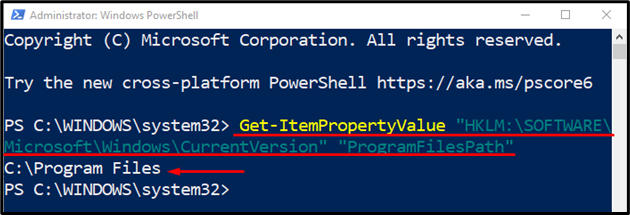


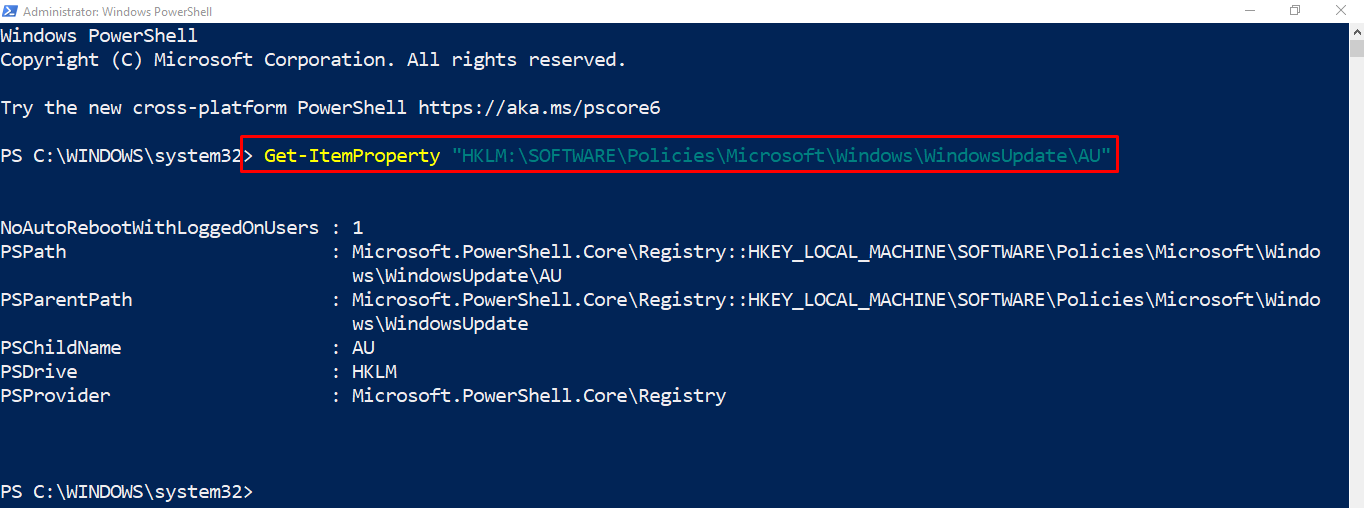





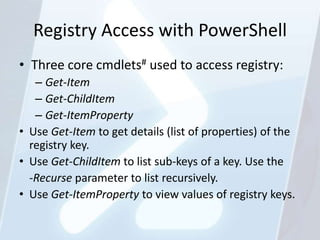
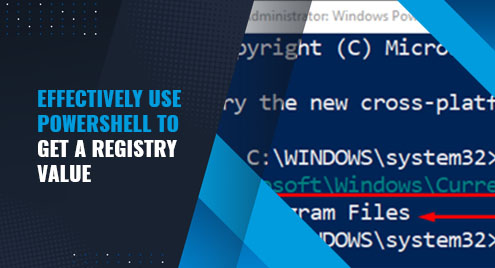




![SOLVED] Help with Iteration Through Registry to Grab Values - PowerShell Solved] Help With Iteration Through Registry To Grab Values - Powershell](https://content.spiceworksstatic.com/service.community/p/post_images/attached_image/b01043f2-22be-4aed-9285-28744143883e-TargetKey.png)



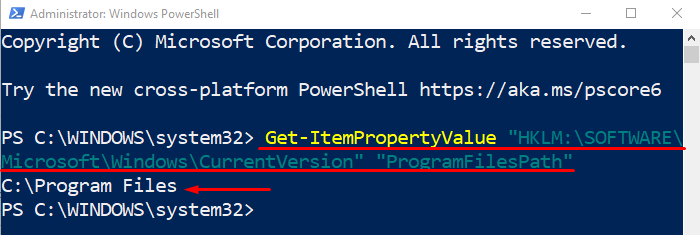
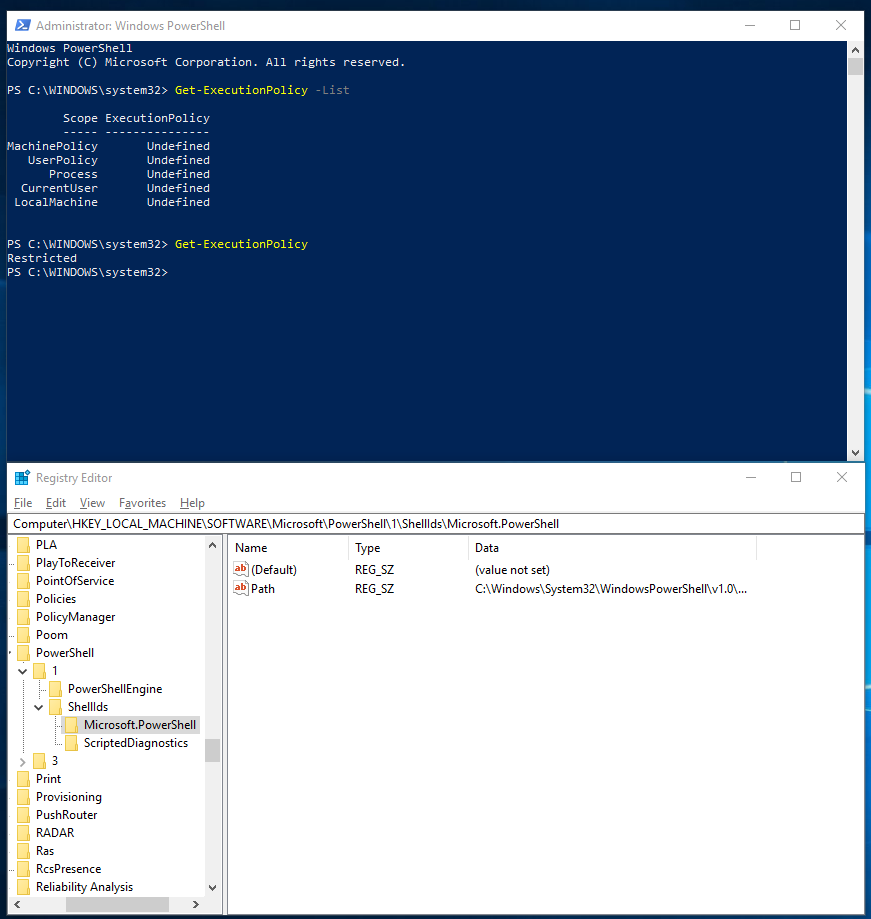












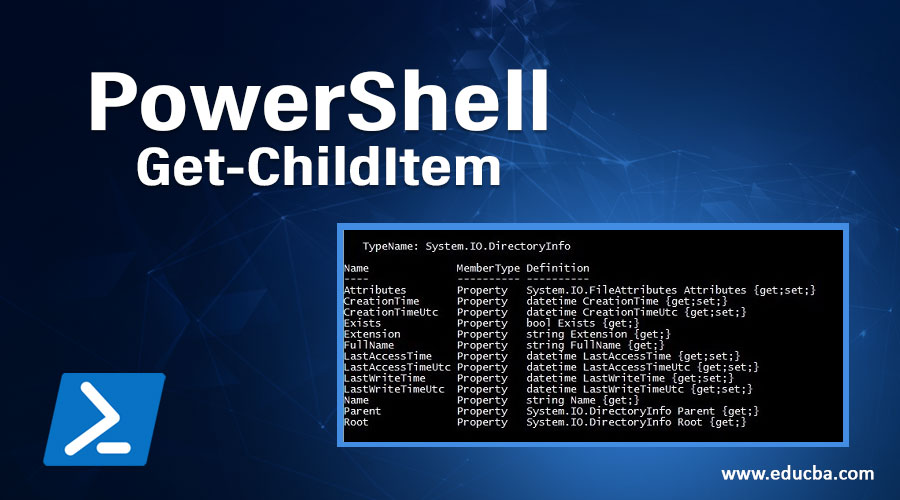

![How to Add Powershell to Context Menu in Windows 10 [Tutorial] - YouTube How To Add Powershell To Context Menu In Windows 10 [Tutorial] - Youtube](https://i.ytimg.com/vi/RzNiD4WQQ1M/maxresdefault.jpg)
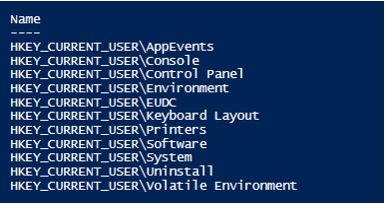





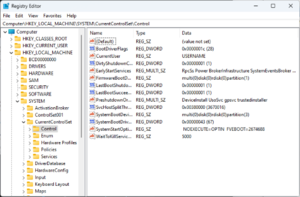
![SOLVED] Issues with space in registry path - PowerShell Solved] Issues With Space In Registry Path - Powershell](https://content.spiceworksstatic.com/service.community/p/post_images/0000359011/5cf6763a/attached_image/a.png)



Article link: powershell get reg value.
Learn more about the topic powershell get reg value.
- Effectively Use PowerShell to Get a Registry Value
- variables – How do I get the value of a registry key and ONLY …
- Working with registry entries – PowerShell | Microsoft Learn
- Batch Script – Reading from the Registry – Tutorialspoint
- How to: Read a Value from a Registry Key – Visual Basic – Microsoft Learn
- PowerShell prompt for input | Various Methods with Appropriate Examples
- Get the Value of a Registry Key Using PowerShell | Delft Stack
- How to Use PowerShell to Read Registry Value
- PowerShell: Get, Modify, Create, and Remove Registry Keys …
- Get-RegValue.ps1 1.0.0.0 – PowerShell Gallery
See more: nhanvietluanvan.com/luat-hoc